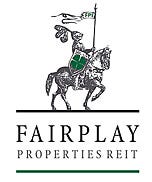Will FairPlay ($6F3:BU) Live up to Its Name

A 90% price drop doesn’t immediately make a company cheap, but it definitely makes it worth a look. I lifted this idea from fellow value investor @DPBakalov, who also tipped me about Yuri Gagarin, which I wrote up previously. But before we start…
Things to Keep in Mind
Financials follow International Financial Reporting Standards (IFRS).
The currency is B…



